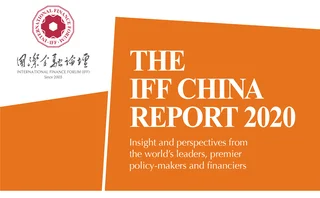
Transfer season


There is still room for improvement in the next round of opening-up within the Chinese financial market. So far, China has implemented a series of measures to deepen opening-up in the financial sector, yet there are obvious insufficiencies. International investors who intend to enter the Chinese market are challenged by a series of obstacles – from regulation to a lack of transparency and predictability. Clearly, China still lags behind international standards.
The fundamental reason the renminbi joined the special drawing rights (SDR) basket in 2016 was to integrate China’s financial sector, financial market and currency into the global marketplace. The renminbi would be recognised as an international benchmark, allowing each market participant access to the Chinese market.

Regulating the exchange rate of the renminbi to keep it generally stable on a reasonable and balanced level is the prime target. China is the largest manufacturer, the largest importer and exporter of goods and commodities, and the second-largest outward investor worldwide. As a result, countries may find it difficult to respond if the exchange rate overshoots or experiences volatility.
The Macro-prudential Policy Bureau of the People’s Bank of China, established in May 2019, is responsible for monetary policy, the two-way opening-up of financial markets, renminbi internationalisation and currency co-operation. The bureau implements the framework for financial macro-regulation that is underpinned by monetary policy and macroprudential policy under the direction of the Central Committee of the Communist Party of China and the State Council of the People’s Republic of China. The latest round of reform and opening-up takes place against a backdrop of uncertainty over escalating China–US trade frictions, which began in May 2018.
Across the border
China must consider how to respond to the possible challenges these new frictions could pose to its next round of opening-up. An important outcome from the US tension has been an outflow of certain industries to neighbouring countries such as Vietnam, Kazakhstan and Pakistan due to declining competitiveness caused by rising costs in China. The outflow can be seen as a result of China shifting its focus towards industrialisation; trade friction with the US has intensified this process, but a calm and objective attitude should be adopted – change is inevitable. Change can also be found in the development of Japan and the ‘Four Asian Tigers’ – Hong Kong, Singapore, the Republic of Korea and Taiwan.
Some argue the mass industrial transfer will lead to a hole in existing industries in China. However, this is all simply part of the process of industrial upgrading and optimisation – which is essential in the new round of opening-up for China to seek new competitiveness and comparative advantages.
This poses the question of how to prevent the risks brought about by this inevitable process. The Plaza Accord of 1985 caused a dramatic appreciation of two of the most important currencies of the time – the Japanese yen and the Deutschmark. Although the yen and the mark increased to almost the same relative value as the US dollar, their journeys from that point have been quite different. Today, Germany remains the country with the largest trade surplus and best competitiveness in the industrial sector, while Japan appears to have lost its competitive advantage.
China is facing a similar challenge as it moves towards becoming an industrialised nation. With rising levels of productivity and China’s increased engagement in global resource allocation, the renminbi should not depreciate in the long term, despite temporary downward pressure. In the medium to long term, the renminbi will gradually increase in value; signs of this are already visible in trends in the yield of China’s Treasury bonds. Currently, the yield of 10-year US treasuries is 1.77%, while that of Japan and France is around zero, and below zero in Germany. Meanwhile, the current yield of 10-year treasuries in China is 3.197% – almost double that of the US.
Despite the outbound transfer of some industries and China’s worldwide resource allocation, increasing production capacity and efficiency ensures all investors can enter the domestic market and enjoy the benefits of China’s rapid economic growth and the relatively high yield of its assets. As a result, it is likely the exchange rate of the renminbi will increase in the medium to long term.
Berlin, Tokyo… Beijing?
Having studied the lessons of Japan and Germany, what path should China pursue? Germany offers the most useful use-case. The mark increased in value as much as the yen, but how has the country maintained its competitiveness?
One important reason is that Germany used to be the largest investment and trade partner among European member states. These countries did not peg their own currencies to the US dollar, but to the German mark. In other words, almost all currencies in Europe appreciated as the mark increased to three times its original value between 1988 and 1995. As the mark appreciated and depreciated, the rest of Europe underwent the same changes; Japan’s yen was not linked to regional partners in the same way and so experienced volatile fluctuations.
China has learned from this example, understanding that those with which it has close trade relations should respond jointly to uncertainties aroused by the China–US trade frictions. The mass industrial transfer has resulted in the establishment of substantial joint industrial parks in neighbouring countries and those with which China has formed a strong economic relationship. The largest park – the Great Stone Industrial Park in Belarus – covers an area of 92 square kilometres. A large number of these parks are run by private – not state-owned – enterprises. However, more than 90% of the foreign investment and related trades occurring in these areas are still settled in US dollars, which will lead to great uncertainties in the current context.
There are clear benefits to settling these transactions in local currencies. For a start, it can minimise and avoid currency mismatches, exchange costs and exchange rate risks caused by the third-party currencies.
China has a large financial market: its securities market is now worth CNY96 trillion – almost the same as its GDP – and foreign investors account for 2.3% of this. The stock market, meanwhile, is worth CNY55 trillion, with foreign investors accounting for 3.2% – or CNY1.77 trillion. Global foreign reserves totalled US$11.7 trillion in value as of the third quarter of 2019; reserves in renminbi only accounted for 2.01% – or $219 billion.
China needs to bring its presence in these markets up to the same level as other emerging market countries. On average, these countries see foreign investors hold 10% and 15% in the securities and bond markets. Were all International Monetary Fund member countries to hold 10.92% of their reserves in renminbi – the same as that held in the SDR – the renminbi market would expand rapidly.
During the industrial transfer, if more trades and investments with other countries are settled in local currencies, these partners will hold more renminbi in their reserves and markets. With China’s financial opening-up, these overseas investors are able to buy high-yield renminbi assets and share the benefits of China’s rapid economic growth. This will encourage them to have more positions and assets in the Chinese currency.
Should this change occur, overseas investors will have to conduct liquidity management and hedge against their foreign exchange transactions – the expansive onshore renminbi transaction demand generated will promote the development of a renminbi forex market that has depth, demand and vitality. Moreover, this market should be developed both onshore and offshore, working towards the goal of the offshore market surpassing the onshore.
As the offshore renminbi forex market develops – particularly in neighbouring countries – pricing needs to be formed through forecasting and the transactions of all market participants, reflecting the renminbi’s supply and demand. Once decided, this price will be relatively stable and balanced, and will act as the exchange rate between renminbi and the local currencies of neighbouring countries.
China is the largest investor and trade partner to almost all of its neighbours and the countries participating in the Belt and Road Initiative. Coupling the renminbi to their currencies will help stabilise investors’ expectations and facilitate bilateral trade and investment. Until this occurs, China and the relevant stakeholders will have to soldier on dealing with the uncertainties wrought by China–US trade frictions.
Only users who have a paid subscription or are part of a corporate subscription are able to print or copy content.
To access these options, along with all other subscription benefits, please contact info@centralbanking.com or view our subscription options here: http://subscriptions.centralbanking.com/subscribe
You are currently unable to print this content. Please contact info@centralbanking.com to find out more.
You are currently unable to copy this content. Please contact info@centralbanking.com to find out more.
Copyright Infopro Digital Limited. All rights reserved.
As outlined in our terms and conditions, https://www.infopro-digital.com/terms-and-conditions/subscriptions/ (point 2.4), printing is limited to a single copy.
If you would like to purchase additional rights please email info@centralbanking.com
Copyright Infopro Digital Limited. All rights reserved.
You may share this content using our article tools. As outlined in our terms and conditions, https://www.infopro-digital.com/terms-and-conditions/subscriptions/ (clause 2.4), an Authorised User may only make one copy of the materials for their own personal use. You must also comply with the restrictions in clause 2.5.
If you would like to purchase additional rights please email info@centralbanking.com







